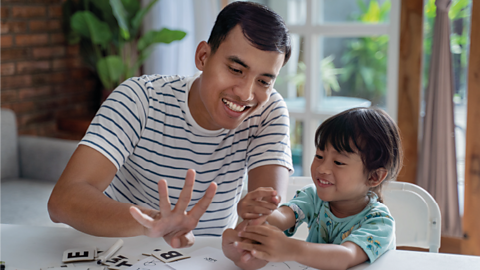Counting is a fundamental part of Early Years numeracy. Vivian Lloyd an expert in the teaching of Mathematics explores the ways you can help your child practice at home and excel mathematically.
Here are some useful tips and fun activities you can do with you child to boost their counting confidence:
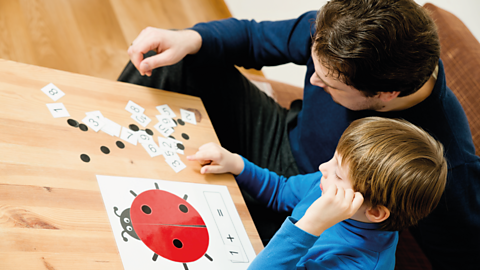
Practise the counting words
We use numbers everyday so itās easy to forget that counting isnāt just about learning numeracy skills, it also involves a lot of new vocabulary for Early Years learners.
Getting familiar with counting words is really important so try to use them at home as often as you can ā and encourage your child to join in too.

Whether itās counting out the shopping or singing songs and rhymes as you get ready for school, you can fill their world with numbers throughout the day.
Counting forwards is easier than counting backwards so at first you may want to focus on rhymes that count up.
Songs like āOne, Two ,Three, Four, Five, Once I Caught a Fish Aliveā or āOne, Two Buckle My Shoeā are an easy way to help them build up their mathematic vocabulary without even realising it.
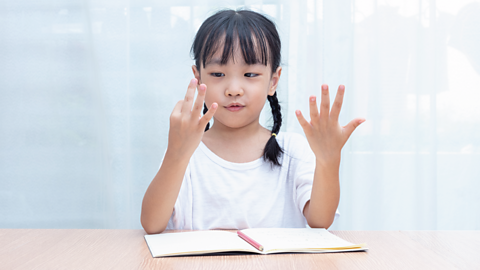
But to truly master counting, your child needs to do more than just recite words in the correct order; itās also about understanding the relationship between the numbers and their value.
Some children find this really tricky at first; they might be familiar with the names of numbers but wonāt necessarily understand how that relates to the items theyāre counting.
It's all at your fingertips
For most people, the simplest mathematical resources are right at their fingertips; fingers and toes are the place to start when it comes to counting. Ask your child to count each finger and touch them as they count out loud.
When you get to the end of the count, encourage your child to summarise the amount in a short sentence: āI have five fingersā. Itās important for them to understand that the last finger raised is not the total , itās all the fingers put together that make up the number.

You can extend the activity up to 10 by counting all your fingers, and then to 20 by adding your toes. Some parents worry that finger-counting could hold their children back from mastering mental methods, but remember this is just a starting point.
At this stage, itās all about experimenting, encouraging your child to get curious and look at numbers from as many different angles as possible.
Build on their interests and make it fun!
Number hunt
Children at this age learn best when theyāre playing, so build on their interests and count things that your child enjoys. Go on a number hunt together and collect items that are significant to them; you might look for different objects in their favourite colour or things starting with the first letter of their name.
Accuracy is really important when it comes to counting. Encourage your child to touch and, in some cases, move the things they have counted. Counting in lines, patterns or pulling items out of bag helps you child keep track.
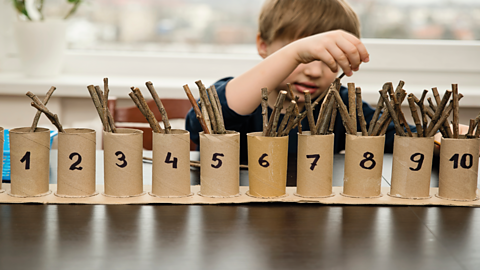
As they become more confident you might start placing things in a random order to test their understanding and organisational skills.Being seen to make mistakes is also great way to build your childās confidence and check how much theyāve learned.
Theyāre likely to correct you and will delight in helping you get it right. Count out the items and purposely miss out a number or count items twice to see if they spot the mistake.
Fruit kebabs
There are plenty of opportunities to learn about counting in the kitchen. If your child is having friends over, why not make some fruit kebabs together. Gather a variety of your childās favourite fruit like oranges, strawberries or apples and ask them to make kebabs with 6 pieces of fruit.
Encourage them to count the pieces out as they go and change up the combinations. Ask questions about what theyāve made: Do all the skewers have six pieces of fruit? Do they all look the same?
This activity helps your child to grapple with a crucial part of Early Years mathematical thinking: the same number of items can look very different, but that doesnāt affect their value.

Count everywhere you go
Look for opportunities to practice counting with your child everywhere you go; you might count the doors you pass, the steps youāre taking or cars on the road. Count together as you go up the stairs and, if theyāre up for a challenge, start to introduce counting backwards or skipping steps.
There are lots of different ways you can help your child master counting at home and gain the skills they need to excel in maths. Whether itās nursery rhymes or fruit kebabs, try to use their interests as an opportunity to bond and learn together.
Play Bud's Number Garden game. game
Practise recognising numbers, counting, ordering and sequencing numbers

More on Parent support - Maths
Find out more by working through a topic
- count2 of 3
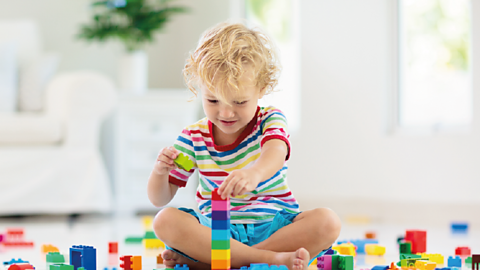
- count3 of 3
